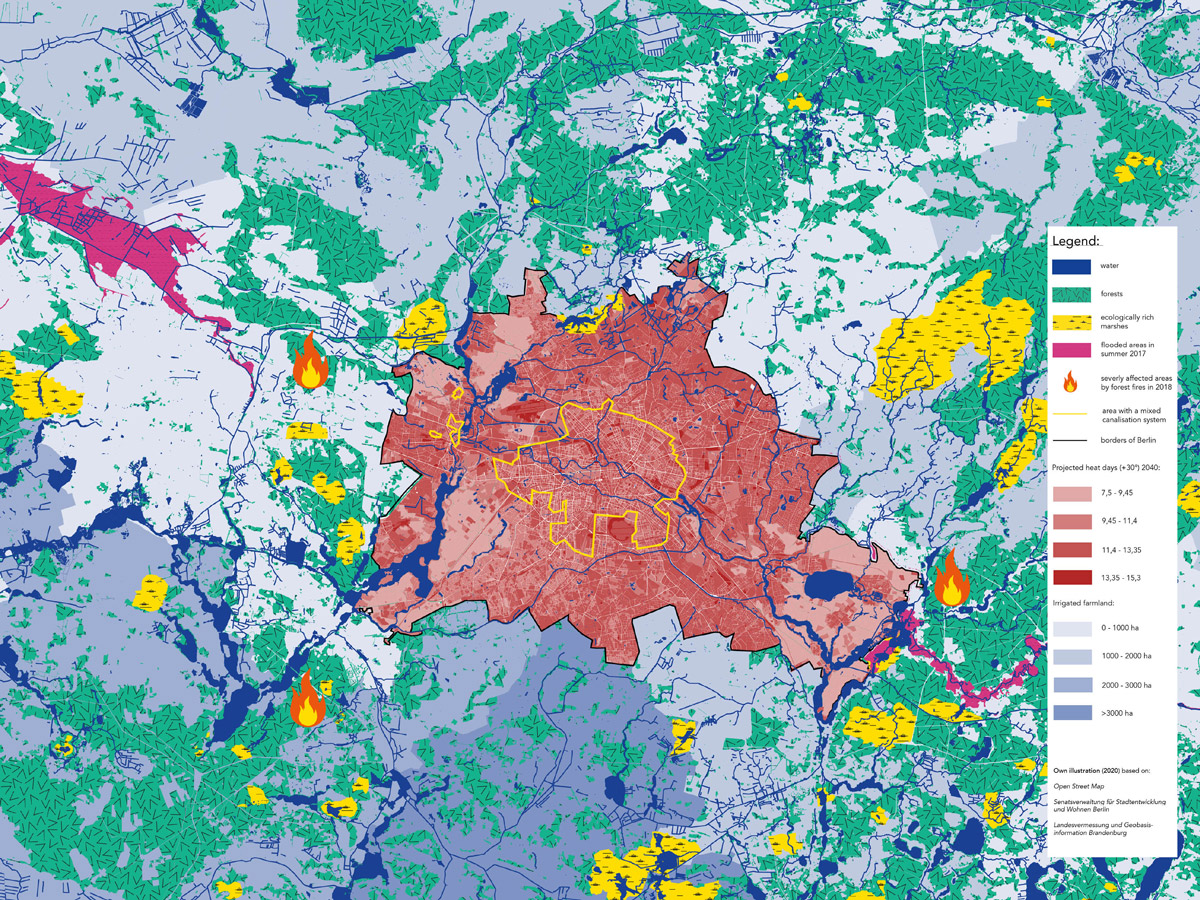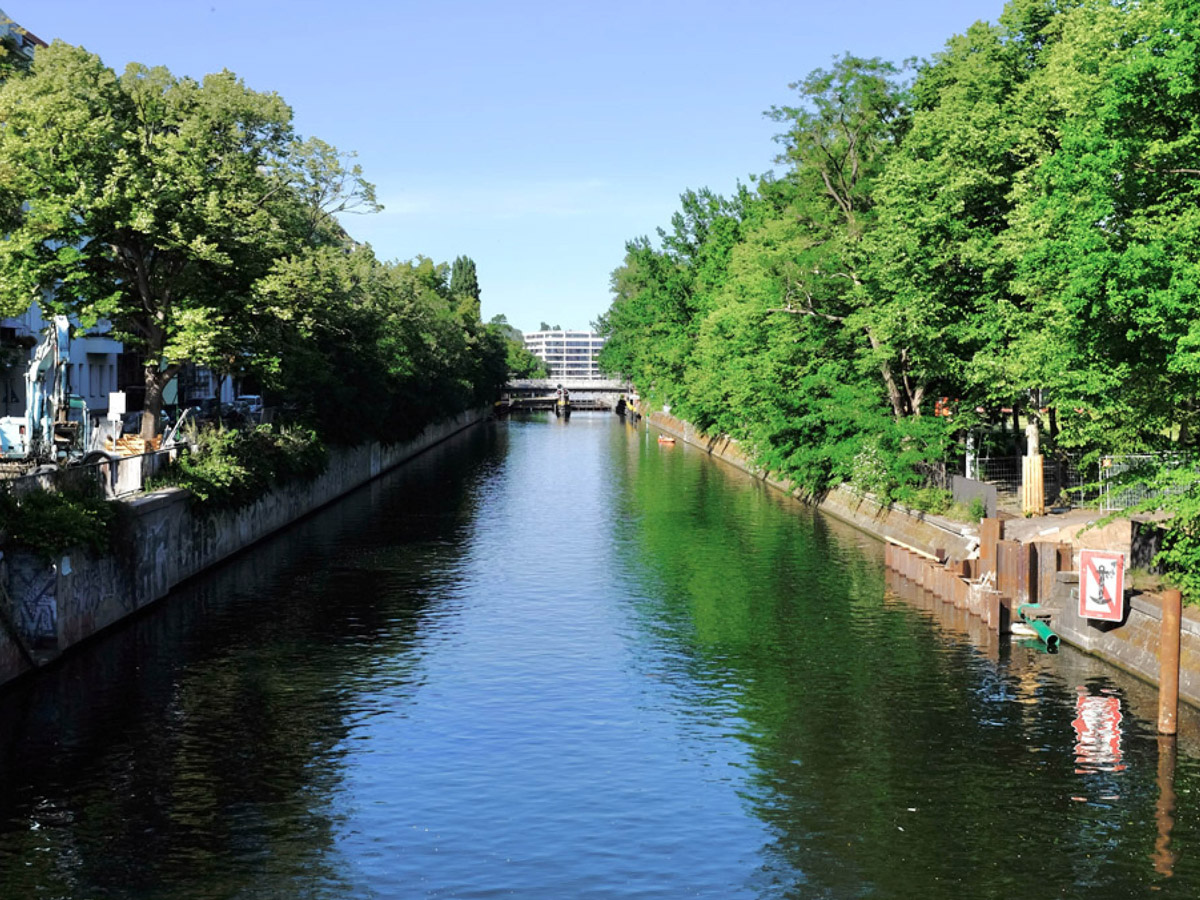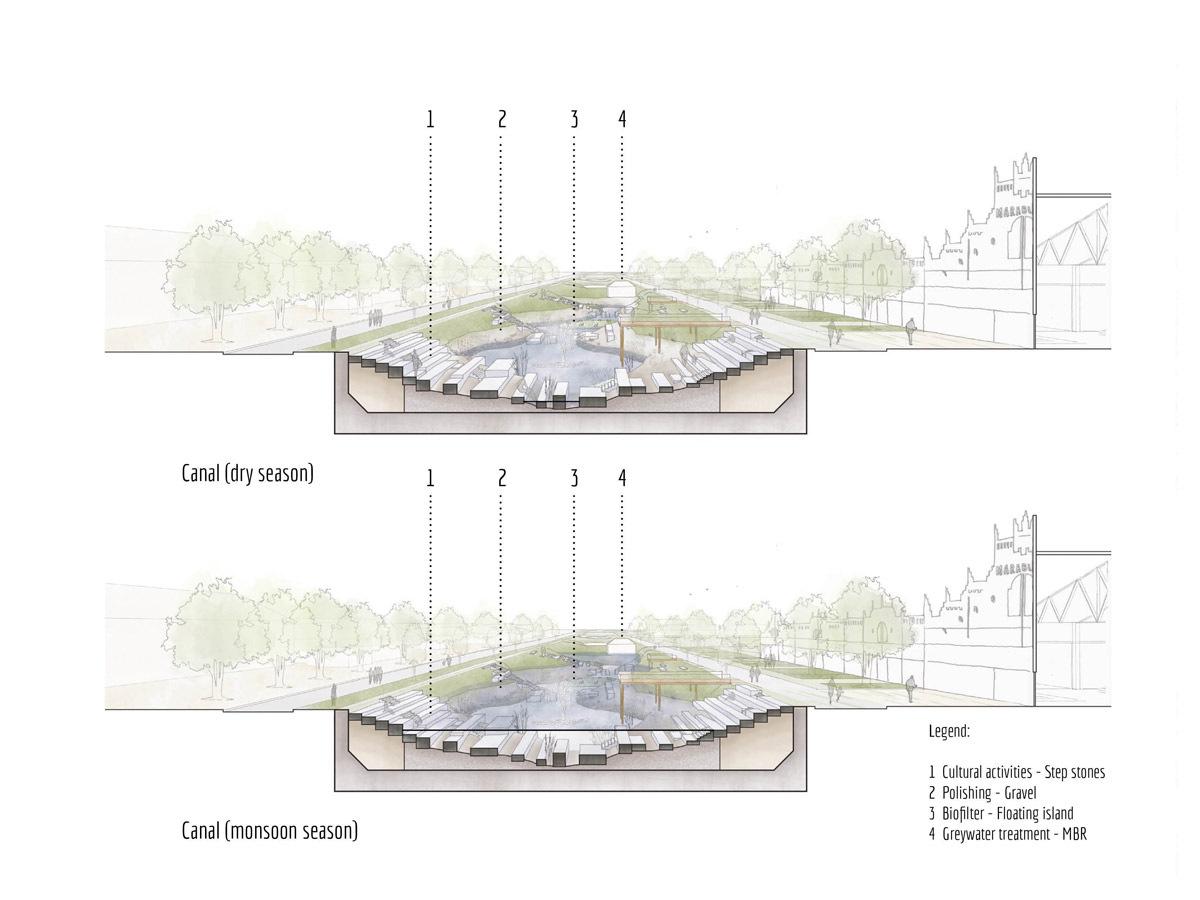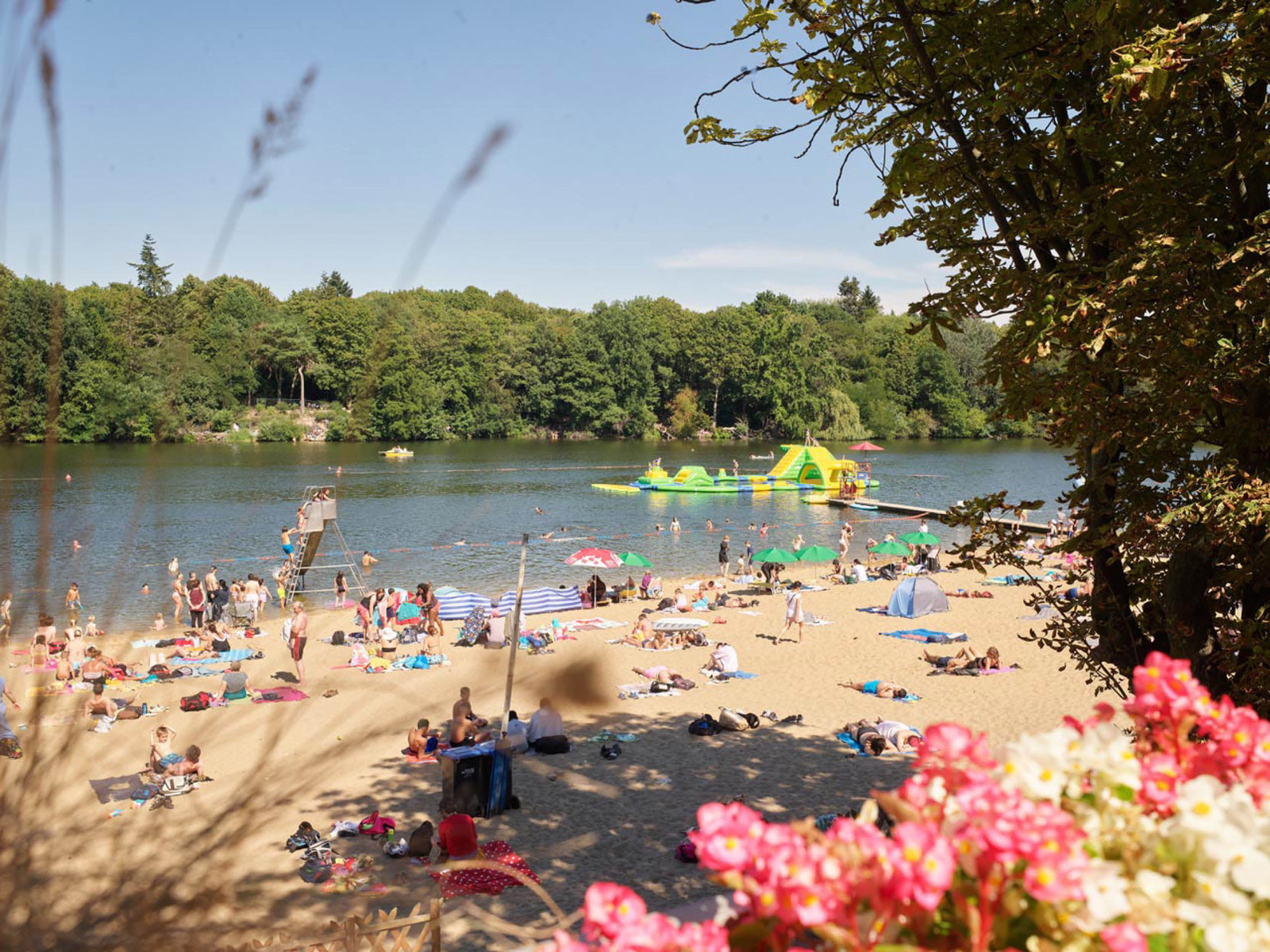INFRASTRUCTURE! Thesis
Ever heard of water stress?
By: BB2040 Editorial Team
With contributions from: Thierry Nolmans & Solveigh Paulus, Ziwei Dong, David Freeman, Luzie Michaels, Pascal Müller, Arina Rahma & Huizi Zhu, Sasha Amaya, Lisa Biermann, Adi Cohen, Yagmur Durak, Liujun Chen, Anna Markušina, Jonas Möller & Azada Taheri, Klub Kanal
Published on June 26, 2021
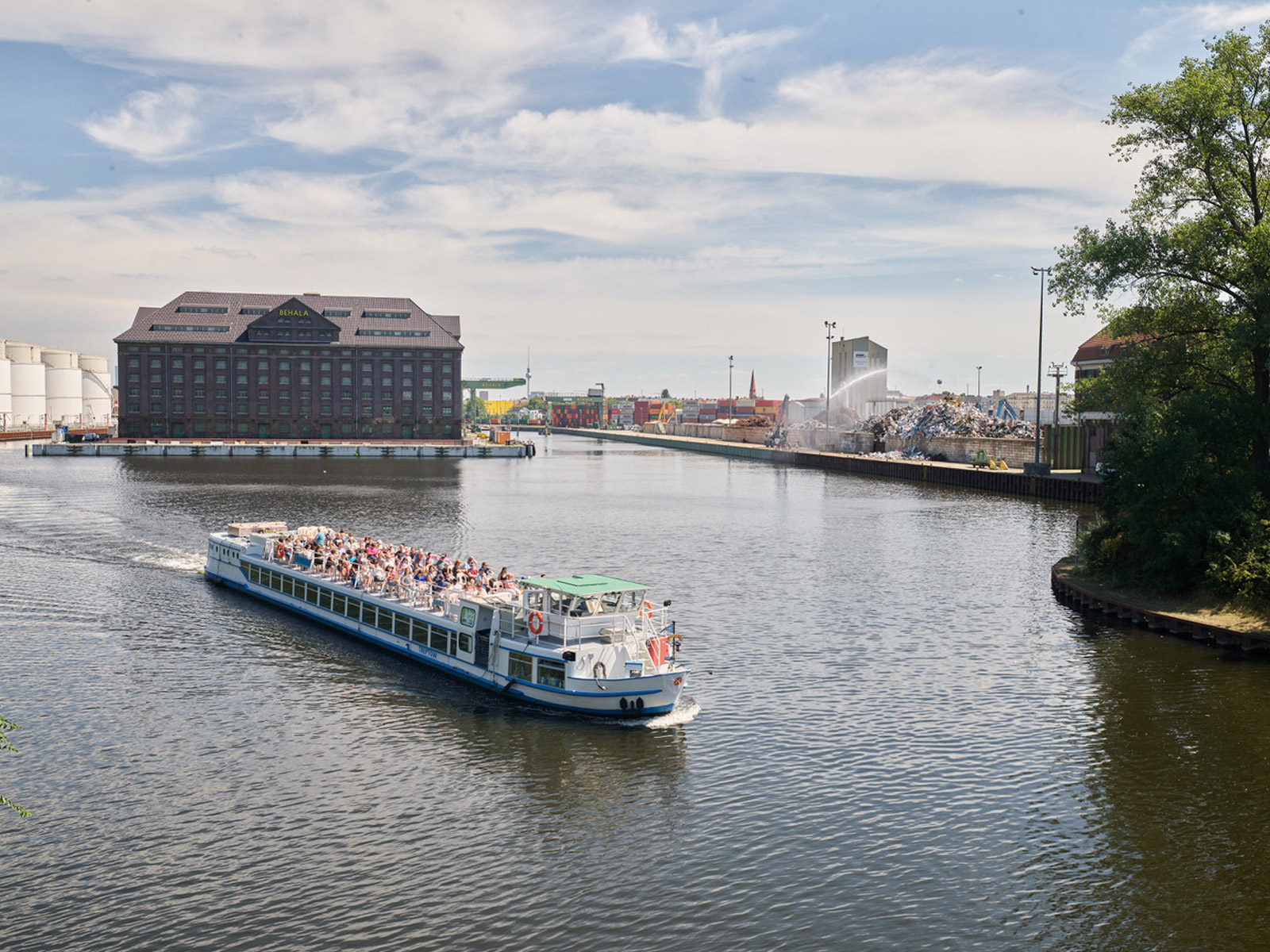
Access to water is a critical issue for many places around the world and, although Berlin-Brandenburg's landscapes are commonly characterised by rivers and lakes, it will become a vital topic for the region in the next decades. By the end of the century, water regions – and their shortages or excesses – could reshape traditional, political and administrative borders. In order to ensure sustainable conservation of our water resources and raise the needed awareness of the issue, water infrastructure has to become a more visible, engaging and connective part of our daily landscapes – beyond just flooded streets and U-Bahn stations when it fails us.
The BB2040 Editorial team is formed by Philipp Misselwitz, David Bauer, Kriti Garg, Rosa Pintos Hanhausen, Simon Warne & Johanna Westermann.
This INFRASTRUCTURE! Thesis is presented at the Wissensstadt Berlin 2021.
Water is a vital resource for human – as well as non-human – life and has always played a key role in the development of our cities and regions. However, as we face climate change and resource depletion, water is becoming an existential question for planetary survival. At current rates, “up to 40% of the world’s population will be living in seriously water-stressed areas by 2035; and the ability of ecosystems to provide fresh water supplies will become increasingly compromised.” [1] Water-related conflicts are already a key driver for geopolitical stresses, displacement and migration and likely to increase in intensity and scope even further. Water-related stresses can also be felt in Berlin-Brandenburg region and call for new approaches to the management of our water resources.
History shows that Berlin-Brandenburg has developed in close relation to its water resources. The last glacial period moulded the topography of the region: the water of melting glaciers flowing parallel to the ice edge into the sea shaped the gentle lowlands, watersheds and riverscape which proved attractive for first settlements including the foundation of Berlin in the 13th century. In addition to the topography, the resulting morphological features shape the flora and fauna of the region today and provide the groundwater reserves that enable Berlin to supply the inhabitants entirely with their own drinking water. Berlin’s growth into an industrial metropolis was largely facilitated by connecting rivers and lakes through multitude of shipping canals which provided transport routes for building materials, food, coal or industrial produce. Today, water continues to be the basis of our lifestyle. The industrial and agricultural goods we consume account for an average use of 3,900 litres of water per person per day [2]. We are used to this abundance of water.
In recent years, however, we have witnessed dramatic change and extreme weather occurrences. We have seen parts of the region falling dry, weakening our ecosystems and lately resulting in more than 100 hectares of forest fires. Many municipalities are concerned about drinking water supplies for their citizens [3]. Then again, heavy rains pour on an urbanized, increasingly sealed and industrialized landscape with decreasing capacity to absorb water. And the centralized, technical drainage infrastructure we relied on until now is unable to cope, resulting in the flooding of cellars and underground train stations [4] and spillages of black water and pollutants into the river systems. Furthermore, the heavy reliance on water exacerbates pollution. The energy sector alone contaminates entire rivers with toxic chemicals, such as iron hydroxide and sulfate as a byproduct of lignite mining [5].
How can we mitigate and adapt to these events and ensure that water doesn’t become a threat to our ecosystems and societies? Dependence on infrastructure cannot be simply reversed. Yet, in light of the changing circumstances we need to question our definition of and approach to water infrastructures to ensure that drinking water continues to flow from our taps and our crops continue to grow. Lets start with an appreciation: Water is not only a life-sustaining resource. It also represents a recreational infrastructure and essential cooling element for a warming region. Water needs can only be addressed by Berlin and Brandenburg together, whose interdependencies become clear, for example, on the warm summer days when the city is too hot, the lakes are too full and the rural exodus sets in.
Water has always shaped political and administrative borders, as a natural barrier it separates nations and landscapes. Conflicts over dwindling water resources are increasing worldwide and give glimpses into what might also happen here, should we fail to act before it is too late. We can no longer take access to water for granted and rely on technical infrastructural systems to keep water issues out of sight and out of mind. We should not wait for a „Day 0“ to teach us about the value of water as the vital resource it is - for us and our environments alike. We therefore need to make our water infrastructures more visible, more accessible in our everyday lives. Living with water will help our societies to become aware, change behaviours, as well as to instigate necessary steps to adapt and reconfigure these infrastructures to ensure a sustainable development of our cities and regions.
[1] Guppy, L., & Anderson, K. (2017). Water Crisis Report. Hamilton, Canada: United Nations University Institute for Water, Environment and Health.
[2] Bundesinformationszentrum Landwirtschaft (2020). Wasserfußabdruck: Wie viel Wasser steckt in landwirtschaftlichen Produkten? https://www.landwirtschaft.de/diskussion-und-dialog/umwelt/wie-viel-wasser-steckt-in-landwirtschaftlichen-produkten [Accessed 21.06.21]
[3] Zeit Online (2021). Bundesamt für Bevölkerungsschutz warnt vor Trinkwasserknappheit
https://www.zeit.de/wissen/umwelt/2021-05/bbk-trinkwasserknappheit-deutschland-grundwasserspiegel-landwirtschaft-armin-schuster [Accessed 21.06.21]
[4] Tagesspiegel (2019). Starkregen flutet Straßen und U-Bahnstationen
https://www.tagesspiegel.de/berlin/berliner-feuerwehr-im-ausnahmezustand-starkregen-flutet-strassen-und-u-bahnstationen/24866172.html [Accessed 21.06.21]
[5] Tagesspiegel (2013). Die braune Flut.
https://www.tagesspiegel.de/berlin/spree-die-braune-flut/6915988.html [Accessed 21.06.21]
BB2040
[EN] Berlin Brandenburg 2040 was initiated by the Habitat Unit in cooperation with Projekte International and provides an open stage and platform for multiple contributions of departments and students of the Technical University Berlin and beyond. The project is funded by the Robert Bosch Foundation.
[DE] Berlin Brandenburg 2040 wurde initiiert von der Habitat Unit in Kooperation mit Projekte International und bietet eine offene Plattform für Beiträge von Fachgebieten und Studierenden der Technischen Universität Berlin und darüberhinaus. Das Projekt wird von der Robert Bosch Stiftung gefördert.
